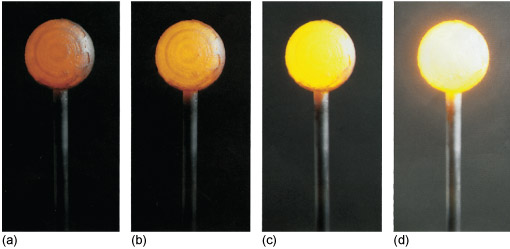2.1 The Sun – some facts and figures
As a first step towards understanding the Sun and how it works, let’s start by looking at some of the Sun’s vital statistics.
Activity 2 What do you know about the Sun ?
As a first step to answering this question take 10 minutes to list any properties of the Sun you can think of. Think about how hot it is, how far away and how large it is.
How would you describe the Sun to someone from another world?
Once you have thought about these questions, scroll down to see how your list compares to ours. Notice that we have broken the list up into two parts. The first details those properties that we can directly observe, while the second is made up of properties of the Sun that can be inferred from observations of both the Sun and other objects within the solar system.
The size and distance of the Sun
The Sun is big. In fact it is more than 100 times the diameter of the Earth (the Sun is approximately 1.4 million km in diameter, compared to Earth’s 12 700 km. To put this in context, if you could somehow fly a typical airliner around the Sun it would take you about 203 days to return to your starting point.
The Sun is approximately 150 million km from the Earth – this is about 400 times further than the distance from the Earth to the Moon. One way to appreciate astronomical distances is to think about the time it takes for light to travel. Light from the Moon takes just over one and a quarter seconds to reach the Earth, but light from the Sun takes nearly eight and a half minutes to reach us. The distance from the Earth to the Sun is often referred to as an Astronomical Unit (AU); this can be handy when comparing distances to other planets in the Solar System.
The temperature of the Sun
The Sun is hot. We know this intuitively in the same manner we know a fire or electric heater is hot because we can feel (or detect) the radiation that it emits because it is hot on our skin. In fact the surface of the Sun is approximately 5600 degrees Celsius (or more than three times the temperature of molten iron), but at its core the temperature reaches an amazing 15 million degrees Celsius.
Of course, it isn’t possible to measure this temperature directly with a thermometer, but it turns out that the colour of light emitted by the Sun allows us to estimate its temperature. If you have ever seen a rainbow you will know that in actual fact the Sun emits light with a range of colours which, when combined together, appears yellowish-white. This combination of wavelengths, or colours, is known as a spectrum. The spectrum of light emitted by any heated object depends on its temperature. Specifically, the cooler the object the redder the light and the hotter the object the bluer the light. You can see this in Figure 2, where a metal ball is heated to ever increasing temperatures. As this happens the ball starts to emit a dull red-orange light which progressively becomes yellower (and brighter) as it heats up. If we could heat the ball to higher temperatures without it melting, the light would start to take on a blue-white tinge.

So, by accurately measuring the colour of the light the Sun emits – or more precisely (and in scientific terms) the wavelength at which the intensity of emitted light is at its strongest – it is possible to work out the temperature of its visible surface layers.
-
Can you think why we don’t see light emitted from everyday objects such as cars, tables and even our own bodies?
-
All these objects do emit light, but being much cooler than the Sun, they emit in the infrared, which is wavelength that our eyes are not sensitive to. Infrared can be detected using special cameras, and this is used for example in search and rescue to detect human survivors.
